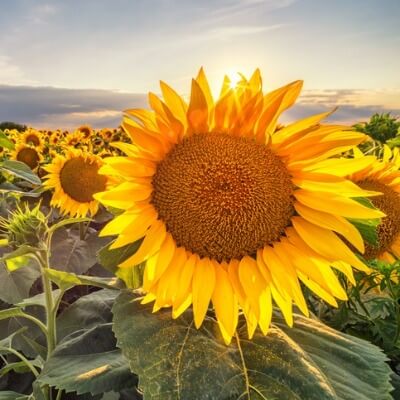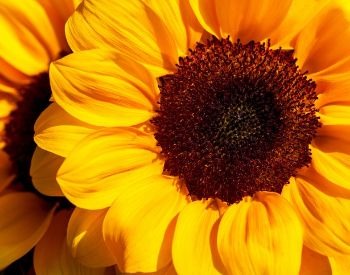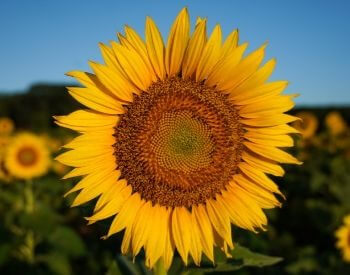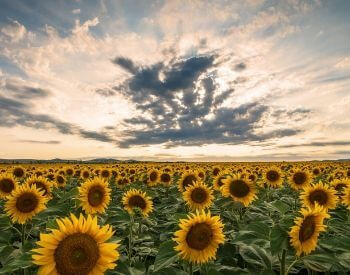
- Common Name: Sunflower
- Type of Plant: Flowering Plant
- Binomial Name: Helianthus annuus
- Genus: Helianthus
- Family: Asteraceae
- Order: Asterales
22 Sunflower Facts for Kids
- A sunflower is a flowering plant that produces flowers that have a similar appearance to the sun.
- A sunflower is also known as the common sunflower.
- The scientific name for the sunflower is Helianthus annuus.
- The sunflower is a member of the Helianthus genus in the Asteraceae family.
- The average height of a sunflower is 9.8 feet and the record for the tallest sunflower was 30.1 feet.
- The flower of a sunflower plant is heliotropic, which means it can move in response to the sun’s current direction. Only the buds and young flowers move with the sun. As the flower matures and starts to produce seeds it will have a fixed direction, which is typically east.
- The disk of a single sunflower contains up to 2,000 tiny flowers. All those tiny brown and yellow fuzzies in the middle of a sunflower disk are tiny flowers, which can make thousands of seeds.
- Sunflowers reproduce through pollination, with the support of pollinators, like bees. However, if a sunflower can’t access pollinators it can pollinate itself.
- Sunflowers are popular for their beauty and the seeds they produce.
- Sunflower seeds have become an important and valuable agricultural crop.
- Sunflower seeds are the fruit of a sunflower, which can be eaten or turned into an oil.
- Sunflower oil is used as a cooking oil and in cosmetic products as a moisturize and protectant.
- According to FAOSTAT, the world produced over 57 million tons of sunflower seeds in 2018.
- According to FAOSTAT, the world’s largest producer of sunflower seeds in 2018 was Ukraine.
- According to data from FAOSTAT, Ukraine produced over 15 million tons of sunflower seeds in 2018.
- The sunflower was domesticated around 5,000 years ago.
- Sunflowers are native to North America but have been introduced to other countries around the world.
- Sunflowers were introduced to Europe in the 16th century.
- Sunflowers are considered a phytoremediator. They can remove contaminates from the soil.
- Sunflowers have been proven to have the ability to remove notable quantities of arsenic from soil.
- Sunflowers were used to remove caesium-137 and strontium-90 from water after the Chernobyl disaster.
- Sunflowers are being used to clean up radioactive material in the soil near the Fukushima Daiichi Nuclear Power Plant, which was the source of the 2011 Fukushima Daiichi nuclear disaster.
Sunflower Pictures

A picture of the petals of a sunflower.

A picture showing a sunflower up close.

A picture of a field of sunflower plants.
Additional Resources on Sunflowers
- About Sunflowers – Discover more awesome facts about sunflowers on the University of Minnestoa website.
- Sunflower: Plant of the Week – Explore the U.S. Forest Service website to learn more about sunflowers.
- How to Grow a Sunflower – Learn how to grow sunflowers on the Almanac website.
- Sunflowers – Wikipedia – Read more about sunflowers and the Helianthus genus on the Wikipedia website.
